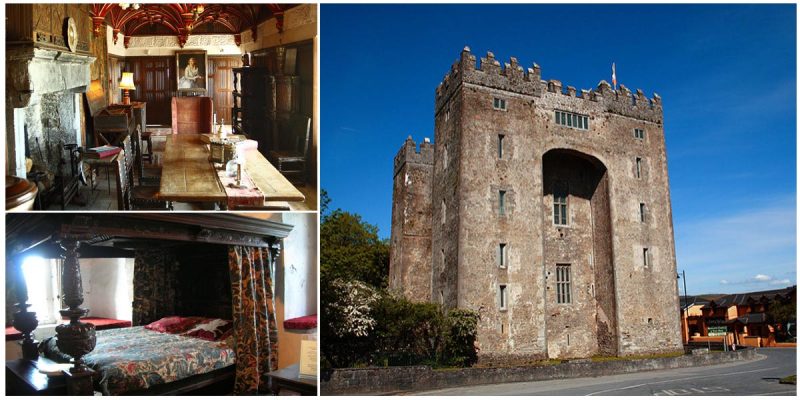Built in 1425, Bunratty Castle is a medieval fortress in County Clare, Ireland, located in the village of Bunratty.
It is the complete fortress in the country, decorated with tapestries and furnishings from the 15th and 16th centuries. The name Bunratty means “river basin” or the end of the Ratty river. On the site along with the castle is the Bunratty Folk Park, which is set on 26 acres and features various buildings. There is a church, a beautiful garden, farmhouses, a pub, many shops and a post office. Today, the castle and the park are major tourist attractions in the country.
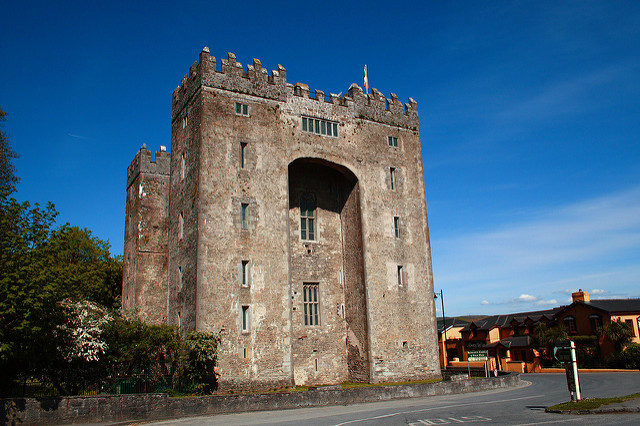
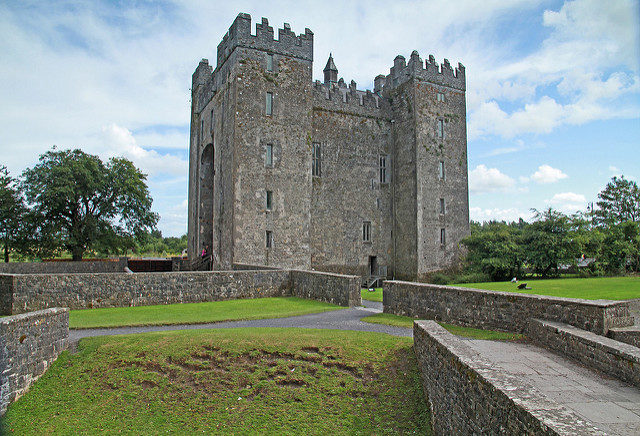
It is believed that the Norsemen were the first settlers of the site, which in 977 was destroyed by the Irish King Brian Boru. In 1250, the site may have been used to construct a motte and bailey castle when King Henry III gave the district of Tradee to Robert de Muscegros. The next year, Muscegros cut down many trees on the site and used the place for the annual fair at Bunratty. In 1276, the lands were taken back by King Henry III and he granted them to Thomas De Clare.
The first stone structure of the castle stood near the site of the present castle and it was built by De Clare. Between 1278 and 1318, the castle was occupied and it was just a large stone tower. When Thomas was away in England in 1284, the castle was attacked by the O’Brians and the whole site was captured and destroyed.
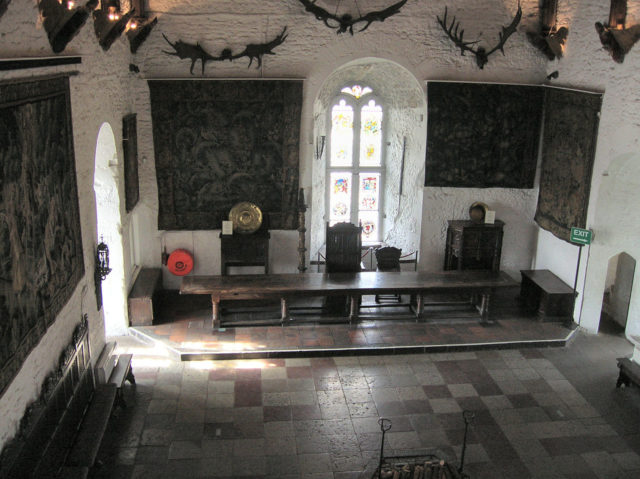
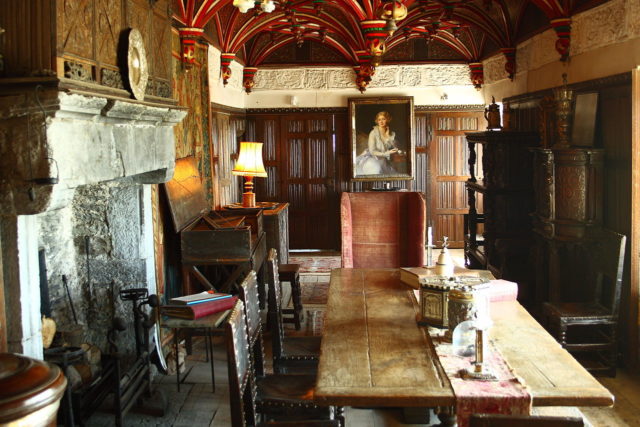
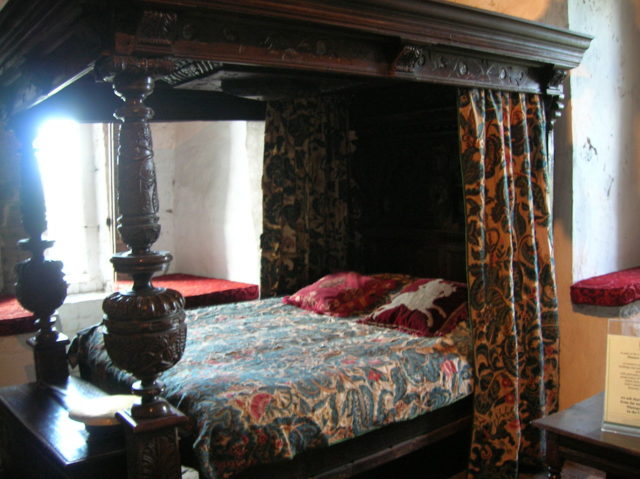
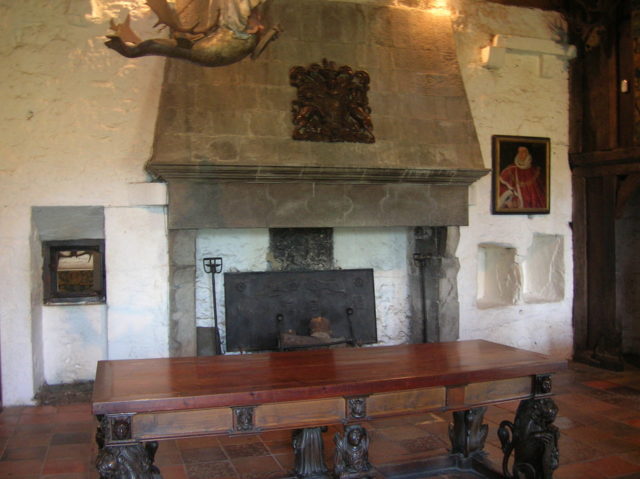
When he returned, he rebuilt the castle but in 1318 it was attacked again by the same enemies and De Clare and his son were killed. His family fled from Bunratty and never returned to the area and from that moment till today no traces remain of the stone tower. The third construction of the castle was completed in 1353 but once again, the exact location remains unknown.
It is believed that it stood where the Bunratty Castle Hotel was later built. There is documented evidence that in 1355, King Edward III released the Irish nobleman Thomas Fitzmaurice from prison, who was charged with letting the castle fall into the hands of the O’Briens.
The present structure of the castle was built in 1425 and its builder may have been Maccon MacNamara, who died before the castle was finished.
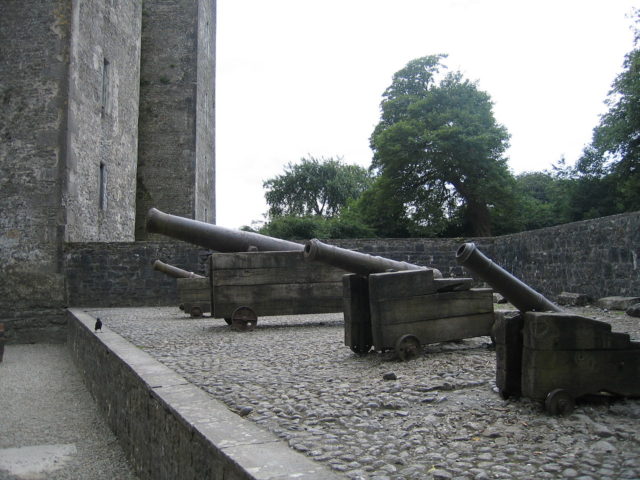
In 1500, the castle was the chief seat of the O’Briens. In 1558, it became one of the principal strongholds of Thomond and it was taken by Thomas Radclyffe and given to Connor O’Brien who made many improvements to it. In the 17th century, it was taken by the Confederates during the Confederate Wars and in the 18th century, it was sold to the Studdent family, who in 1804 left the castle and moved into a more modern house.
Read another story from us: The home of the dragon- the fascinating history of the Ljubljana Castle
In the 20th century, it was purchased by the 7th Viscount Gort. From 1960, the castle has been open to the public and is run by Shannon Heritage as a tourist attraction.
